Description
Intel I3 2nd Generation Best Processor:
- Intel Core i3 2nd generation processor, codenamed Sandy Bridge, was released in early 2011. It marked a significant milestone in the evolution of Intel’s processors, bringing new levels of performance and energy efficiency to the market. In this article, we will explore the key features, advancements, and impact of the Intel Core i3 2nd generation processor in detail.
- Intel Core i3 2nd generation processor was part of the Sandy Bridge microarchitecture, which represented a major leap forward in terms of performance and efficiency. It was manufactured using a 32nm (nanometer) process technology, allowing for smaller and more power-efficient transistors.
Key Features and Specifications: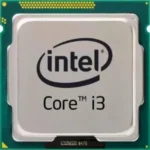
1. Dual-Core Processing:
- The Intel Core i3 2nd gen processors were dual-core CPUs, meaning they had two processing cores on a single chip. This allowed for better multitasking capabilities and improved overall performance for everyday tasks.
- Intel Core i3 2nd generation processor, a part of the Sandy Bridge microarchitecture, introduced the concept of dual-core processing to mainstream consumers. With its dual-core design, the processor featured two independent processing units on a single chip. This innovation significantly enhanced the computer’s multitasking capabilities, allowing users to run multiple applications simultaneously without a noticeable drop in performance. Each core could handle individual tasks, ensuring smoother and more responsive computing experiences for everyday users.
- This dual-core configuration was a fundamental improvement over single-core processors, enabling better efficiency in handling tasks that require parallel processing, such as running applications, browsing the internet, and handling multimedia content. The introduction of dual-core processing in the Intel Core i3 2nd generation paved the way for a new era of computing, setting higher standards for performance and responsiveness in budget and mid-range systems.
2. Hyper-Threading Technology:
- One of the standout features of the Core i3 2nd gen processors was Hyper-Threading Technology. This technology enabled each physical core to handle two threads simultaneously, effectively giving the dual-core processor the ability to handle four threads. This significantly improved multitasking performance and responsiveness.
- Intel Core i3 2nd generation processor introduced Hyper-Threading Technology, a groundbreaking feature that allowed each physical core to handle two threads simultaneously. This technology effectively doubled the number of threads the processor could execute, enhancing multitasking capabilities and overall performance. By efficiently managing multiple tasks in parallel, Hyper-Threading improved the system’s responsiveness and enabled smoother execution of applications.
- This innovation was especially beneficial for users engaging in tasks that demanded simultaneous processing, such as running multiple applications or virtual machines. Hyper-Threading became a standard feature in subsequent Intel processors, significantly enhancing their multitasking capabilities and boosting overall system performance.
3. Integrated Graphics:
- 2nd gen Core i3 processors featured integrated Intel HD Graphics 2000 or 3000, depending on the specific model. This integrated graphics solution was a notable improvement over previous generations, providing decent graphics performance for casual gaming and multimedia tasks.
4. Smart Cache:
- These processors came with a shared L3 cache, which allowed for quicker access to frequently used data by both cores. A larger cache size generally translates to better performance in tasks that require frequent data retrieval.
5. Turbo Boost Technology:
- Turbo Boost was another significant feature that dynamically increased the processor’s clock speed when applications demanded more performance. This ensured that the processor operated at higher frequencies for better performance under heavy workloads.
- Intel Core i3 2nd generation processor introduced Turbo Boost Technology, a dynamic overclocking feature that automatically increased the processor’s clock speed beyond its base frequency when additional performance was needed. This intelligent technology allowed the processor to adapt to the workload, delivering higher speeds for demanding applications. By optimizing performance in real-time, Turbo Boost enhanced the overall responsiveness of the system, providing a seamless experience for users engaging in tasks that required extra processing power.
- This feature became integral in optimizing the balance between energy efficiency and performance, ensuring users could enjoy enhanced speeds for tasks ranging from gaming to complex computations, making the Core i3 2nd generation processors versatile and efficient for various applications.
6. Enhanced Speed Step Technology:
- Enhanced Intel Speed Step Technology (EIST) helped in dynamically adjusting the processor’s voltage and core frequency, further optimizing power consumption and heat generation.
- EIST dynamically adjusted the processor’s voltage and core frequency based on the system’s workload. When the computer was performing light tasks or idle, EIST lowered the processor’s frequency and voltage, conserving power and minimizing heat production. Conversely, when the system required higher performance for demanding applications, EIST would automatically increase the processor’s frequency and voltage to deliver the necessary power.
- This intelligent, real-time adjustment not only saved energy but also prolonged the lifespan of the processor by reducing thermal stress during low-demand periods. Enhanced SpeedStep Technology played a crucial role in balancing performance and power consumption, ensuring that the Intel Core i3 2nd generation processors delivered efficient and responsive computing experiences for users while minimizing environmental impact.
Performance and Impact:
- Intel Core i3 2nd generation processors offered a balanced mix of performance and energy efficiency. They were widely used in budget and mid-range laptops and desktops, providing an excellent computing experience for the average user. With Hyper-Threading, these processors handled multitasking smoothly, making them suitable for everyday tasks like web browsing, office applications, and media consumption.
- In the gaming realm, the integrated Intel HD Graphics 2000/3000 offered reasonable performance for older games and less demanding titles. While not designed for hardcore gaming, these processors allowed users to enjoy casual gaming experiences without the need for a discrete graphics card.
Final Thoughts:
- Intel Core i3 2nd generation processor was a significant milestone in Intel’s processor lineup. Its dual-core design with Hyper-Threading, integrated graphics, and energy-efficient performance made it a popular choice for budget-conscious consumers. These processors laid the foundation for future Intel Core processors, incorporating advancements in both processing power and energy efficiency.
- As technology continues to advance, the Intel Core i3 2nd generation processor remains a testament to Intel’s commitment to providing reliable and efficient computing solutions for a wide range of users, shaping the landscape of consumer computing in its time.

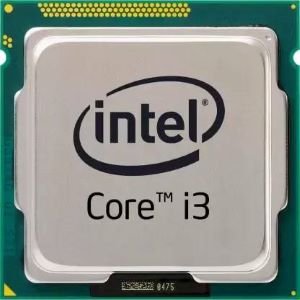


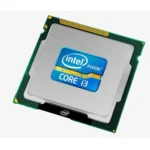

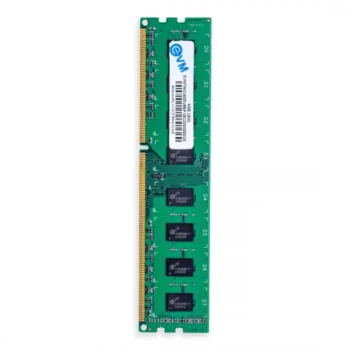

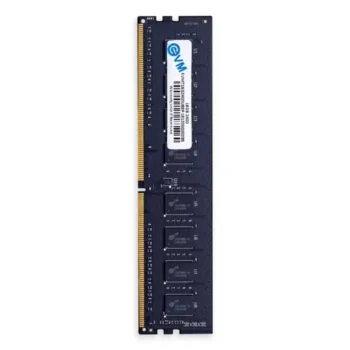
Reviews
There are no reviews yet.